- Home
- Lawrence Block
Alive in Shape and Color Page 4
Alive in Shape and Color Read online
Page 4
I went. Why not? The alternative was passage home, to a job I was sure was already gone. I was absent without leave. So I took the sleeper train, to a hot and tawny landscape. A pony and trap took me into the hills. Renoir’s place was a pleasant spread. A bunch of manicured acres, and a low stone house. He had been successful for many years. No kind of a starving artist. Not anymore.
There was no one home, except a young man who said he was a good friend of Renoir’s. He said his name was Lucien Mignon. He said he lived there. He said he was a fellow artist. He said Renoir’s kids had been and gone, and Renoir’s wife was in Nice, staying with a friend.
He spoke English, so I made sure he would pass on all kinds of sincere condolences to the appropriate parties. From Renoir’s admirers in New York. Of which there were many. Who would all like to know, for reasons I made sound purely academic and even sentimental, exactly how many more paintings were left in the studio.
I figured Mignon would answer, being an artist, and therefore having a keen eye for a buck, but he didn’t answer. Not directly. Instead, he told me about his own life. He was a painter, at first an admirer of Renoir, then a friend, then a constant companion. Like a younger brother. He had lived in the house for ten years. He felt despite the difference in their ages, he and Renoir had formed a very deep bond. A true connection.
It sounded weird to me. Like why people get sent to Bellevue. Then it got worse. He showed me his work. It was just like Renoir’s. Almost exactly copied, in style and manner and subject. All of it was unsigned too, as if to preserve the illusion it might be the master’s own product. It was a very odd and slavish homage.
The studio was a big, tall, square room. It was cool and light. Some of Renoir’s work was hung on the wall, and some of Mignon’s was hung beside it. It was hard to tell the difference. Below the pieces on display, there were indeed canvases stacked six deep against the walls. Mignon said Renoir’s kids had set them aside. As their inheritance. They were not to be looked at and not to be touched. Because they were all very good.
He said it in a way that suggested somehow he had helped make them all very good.
I asked him if he knew of any other canvases as yet unspoken for. Anywhere in France. In answer he pointed across the room. Against another wall was a very small number of items the kids had rejected. Easy to see why. They were all sketches or experiments or otherwise unfinished. One was nothing more than a wavy green stripe running left to right across a bare canvas. Maybe a landscape, started and immediately abandoned. Mignon told me Renoir didn’t really like working out of doors. He liked being inside, with his models. Pink and round. Village girls, mostly. Apparently one of them had become Mrs. Renoir.
One of the rejected canvases had the lower half of a landscape on it. A couple dozen green brushstrokes, nicely done, suggestive, but a little tentative and half-hearted. There was no sky. Another abandoned start. A canvas laid aside. But a canvas later grabbed up for another purpose. Where the sky should have been was a still life of pink flowers in a green glass vase. It was in the top left of the frame, painted sideways onto the unfinished landscape, not more than about eight inches by ten. The flowers were roses and anemones. The pink colors were Renoir’s trademark. Mignon and I agreed no one did pink better than Renoir. The vase was a cheap thing, bought for a few sous at the market, or made at home by pouring six inches of boiling water into an empty wine bottle, and then tapping it with a hammer.
It was a beautiful little fragment. It looked done with joy. Mignon told me there was a nice story behind it. One summer day Mrs. Renoir had gone out in the garden to pick a bouquet. She had filled the vase with water from the pump, and arranged the stems artfully, and carried it into the house through the studio door, which was the easiest way. Her husband had seen it and was seized with desire to paint it. Literally seized, Mignon said. Such was the artistic temperament. Renoir had stopped what he was doing and grabbed the nearest available canvas, which happened to be the unfinished landscape, and he had stood it vertically on his easel and painted the flowers in the blank space where the sky should have been. He said he couldn’t resist their wild disarray. His wife, who had spent more than ten minutes on the arrangement, smiled and said nothing.
Naturally I proposed a deal.
I said if I could take the tiny still life for myself, purely as a personal token and souvenir, then I would buy twenty of Mignon’s works to sell in New York. I offered him a hundred thousand dollars of Porterfield’s money.
Naturally Mignon said yes.
One more thing, I said. He had to help me cut the flowers out of the larger canvas and tack the fragment to stretchers of its own. Like a miniature original.
He said he would.
One more thing, I said. He had to paint Renoir’s signature on it. Purely for my own satisfaction.
He hesitated.
I said he knew Renoir had painted it. He knew that for sure. He had watched it happen. So where was the deception?
He agreed fast enough to make me optimistic about my future.
We took the half-landscape, half-flowers canvas off its stretchers, and we cut the relevant eight-by-ten rectangle out of it, plus enough wraparound margin to fix it to a frame of its own, which Mignon assembled from wood and nails lying around. We put it all together, and then he squeezed a dot of paint from a tube—dark brown, not black—and he took a fine camel-hair brush and painted Renoir’s name in the bottom right corner. Just Renoir, with a stylized first capital, and then flowing lowercase letters after it, very French, and very identical to the dozens of examples of the real thing I could see all around.
Then I chose twenty of his own canvases. Naturally I picked the most impressive and Renoir-like. I wrote him a check—one hundred thousand and 00/100—and we wrapped the twenty-one packages in paper, and we loaded them into the pony cart, which had waited for me, per my instructions and Porterfield’s generous tip. I drove off with a wave.
I never saw Mignon again. But we stayed in business together, in a manner of speaking, for three more years.
I took a room in Cannes, in a fine seafront hotel. Bellboys brought up my packages. I went out and found an art store and bought a tube of dark brown oil and a fine camel-hair brush. I propped my little still life on the dresser and copied Renoir’s signature, twenty separate times, in the bottom right corners of Mignon’s work. Then I went down to the lobby and cabled Porterfield: Bought three superb Renoirs for a hundred thousand. Returning directly.
I was home seven days later. First stop was a framer’s for my still life, which I then propped on my mantelpiece, and second stop was Porterfield’s mansion on Fifth, with three of Mignon’s finest.
Which was where the seed of guilt was planted. Porterfield was so fucking happy. So fucking delighted. He had his Renoirs. He beamed and smiled like a kid on Christmas morning. They were fabulous, he said. They were a steal. Thirty-three grand apiece. He even gave me a bonus.
I got over it pretty fast. I had to. I had seventeen more Renoirs to sell, which I did, leaking them out slowly over a three-year span, to preserve their value. I was like the dealers I had met in Paris. I didn’t want a glut. With the money I got I moved uptown. I never lived with Angelo again. I met a guy who said RCA stock was the thing to buy, so I did, but I got taken for a ride. I lost most everything. Not that I could complain. The biter bit, and so on. Sauce for the fucking goose. My world shrunk down to a solitary life in the uncaring city, buoyed up by the glow of my roses and anemones above the fireplace. I imagined the same feeling inside Porterfield’s place, like two pins in a map. Twin centers of happiness and delight. He with his Renoirs, and me with mine.
Then the heart attack, and the guilt. The sweet dumb fuck. The big smile on his face. I didn’t write a letter. How could I explain? Instead, I took my Renoir off the wall, and wrapped it in paper, and walked it up Fifth, and through the bronze Italian gates, to the door. Porterfield wasn’t home. Which was Okay. I gave the package to his flunky and said I wanted
his boss to have it, because I knew he liked Renoir. Then I walked away, back to my place, where I continue to sit, just waiting for the second episode. My wall looks bare, but maybe better for it.
NICHOLAS CHRISTOPHER is the author of six novels, The Soloist, Veronica, A Trip to the Stars, Franklin Flyer, The Bestiary, and Tiger Rag; nine books of poetry, most recently, On Jupiter Place and Crossing the Equator: New and Selected Poems 1972–2004; a nonfiction book, Somewhere in the Night: Film Noir and the American City; and The True Adventures of Nicolò Zen, a novel for children. His books have been widely translated and published abroad. He lives in New York City.
Girl with a Fan by Paul Gauguin
GIRL WITH A FAN
BY NICHOLAS CHRISTOPHER
1
On the fifth of June, 1944, a young man stepped off the 9:13 train from Lyon, squinting into the morning light. Tall and slender, he had an asymmetrical face: the right eye higher than the left, the left cheek planed more sharply than the right. He was wearing a brown suit, black shirt, yellow tie, and brown fedora. His suit was rumpled, his boots scuffed. He was carrying a leather briefcase with a brass lock. His pants cuffs were faintly speckled with yellow paint.
He cast a long shadow as he walked down the platform. Halfway to the station, two men in leather coats came up from behind and gripped his arms. One of them pressed a pistol into his side, the other grabbed his briefcase. They veered away from the station, guiding him roughly down an alley to a waiting car. A man in dark glasses was behind the wheel. He was bald, with an eagle tattooed at the base of his skull.
After frisking the young man and taking his wallet, the two men pushed him into the rear seat, pressed between them. The driver glanced at him in the rearview mirror and said, “Hubert Ditmar, welcome to Arles.”
The man on his right rifled his wallet. He removed eleven francs, a photograph of a blond woman in a red coat, and three calling cards:
LOUIS VINCENT
STOCKBROKER
CLERY & FENNIEL
15 RUE DE MARIBEL
BRUSSELS, BELGIUM 63 21T
Also a Belgian identity card in that name which listed his eyes as brown, hair black, height five ten, date of birth November 30, 1908, in Liège.
His actual date of birth was November 29, 1908, in Orléans, and his real name was neither Hubert Ditmar nor Louis Vincent.
2
Since beginning his assignment four months earlier, Hubert Ditmar had feared this day would come. He had planned to be in Arles until evening, returning to Lyon on the 6:10 express. He had made these day trips before—to Avignon, Rouen, Limoges, Perpignan—the shorter the stay, the better. His superiors praised him for his resourcefulness and grit, but he feared that he was overexposed, and that this trip, slated to be his last, might require him to summon a different kind of courage.
They drove past wide cornfields and meadows carpeted with lavender, through a beech forest, and then more cornfields. Hubert kept his eyes fixed on the road. The men ordered him to empty his pockets. Fountain pen, latch key, briefcase key, penknife, pipe, tobacco pouch, train ticket. They also took his topaz ring and his amber wristwatch, the back of which was engraved L.C.V.
The man on his right unlocked the briefcase and sifted through the contents. There was a blank sketch pad and a set of twelve colored pencils in a leather case. A railroad map of France. And two brown folders, one containing stock listings and market charts, the other two typewritten pages in a language the man had never seen before.
“What is this?”
“A financial report,” Hubert said.
“The language.”
“Catalan.”
“A financial report without numbers?”
“The numbers are spelled out.”
The man on Hubert’s left threw an elbow into his side, expertly, so it knocked the wind out of him but didn’t crack a rib.
The driver glanced back at the pages. “It’s code,” he said.
“Whatever it is, you will translate it for us,” the man on the left said.
It wasn’t a question.
“I don’t know the language,” Hubert said, bracing himself for another blow.
It came from his right and this time cracked a rib.
And he screamed.
3
When they arrived at 2 Place Lamartine, a yellow two-story house, a green-and-yellow parrot flew off the roof into the forest. The guard at the entrance, an SS corporal, snapped to attention as the men stepped out of the car. Hubert was doubled over in pain. The men dragged him to the door. Hubert glanced up at a green patch of sky reflected in a window before losing consciousness.
He came to a half hour later when someone slapped him twice. He was seated, his hands and feet bound to a wooden chair. A ring of flood lamps were directed at him, beyond which he could see nothing. The room was dank, its low ceiling crisscrossed by pipes. A basement. His jacket and shoes were gone, his shirt torn open, and his tie was noosed around his neck.
A slow, smooth voice addressed him from the darkness.
“We won’t waste time on the fact your name is not Louis Vincent.”
“That is my name.”
“And you traveled here from Lyon?”
“Yes.”
“Before that?”
“Paris.”
“We’ve already allowed you one lie. You don’t get a second. Again: before Lyon?”
Hubert hesitated. “Geneva.”
“You traveled across the Swiss border to Lyon in a hired car, correct?”
“Yes.”
“What was your business in Geneva?”
“Banking. At the Credit Montray.”
“That is another lie.”
Before he could respond, Hubert heard a shuffle behind him, followed by someone pulling the tie tight around his throat. So tight he thought he would pass out again. Just as suddenly, he was released, gasping for air.
“In Switzerland you visited Signor Ugo Bartello, correct?”
Hubert nodded
“What is your business with him?”
“His investments.”
“Stocks, bonds? Don’t lie.”
“No.”
“What investments, then?”
Hubert caught a whiff of musk—the cologne the man who choked him was wearing.
“You’ll tell us eventually. Spare yourself.”
“Art,” Hubert said.
“Bartello is a collector?”
“Yes.”
“And why is he consulting you, a stockbroker?”
“Because I know art. I purchase for him.”
“How do you know art?”
“I studied to paint.”
“But you became a stockbroker.”
“I was not good enough as a painter.”
“You are good enough to forge.”
“What?”
Again his tie was pulled tight. He felt the blood trapped, pounding, in his head. His lungs contracting. Ten, twenty seconds ticked by. He thought his heart would burst. He was released again. The cologne scent was stronger. The room was spinning.
“You’re a forger. You copy the paintings Bartello steals from the Reich. Is that not true?”
Hubert couldn’t catch his breath. “Yes.”
“Bartello’s thieves steal them and replace them with your forgeries. By decree, all the artwork in France is now property of the Reich. We’ve been storing it in warehouses before transporting it to Germany. By 1946 we will have secured every article the Reich Ministry has requested, including the paintings Bartello has stolen. He is an Allied pimp.” He paused. “We know why you are in Arles, Monsieur Ditmar.”
Hubert thought he was going to throw up. The restraints were cutting into his wrists and ankles. His cracked rib felt like a knife in his side.
“Most of the Van Goghs are already in Berlin,” the voice continued. “But, just as Bartello broke into our warehouses, we penetrated his network of scouts and couriers, of whom you are one. We fed him th
e false information that certain lost paintings of Gauguin’s were unearthed and awaiting shipment at the Marchand Gallery. There are no Gauguins, and the Marchand Gallery is closed. He sent you to study the paintings first-hand, correct?”
“Yes.”
“As a forger and a thief, you will be hanged. Unless . . .”
Hubert waited.
“We don’t care about you. It’s Bartello we want. When the Italian government fell, he had enough connections to escape. Now we cannot touch him because he is in Switzerland with the paintings, whereabouts unknown. He keeps his thieves two steps removed from him. They don’t even know who they’re stealing for, only that he pays them plenty. He must pay you even more. You are one of the few who has gotten near him, personally. Who can give us his location. If you do—when you do—along with the names of your comrades and a list of the paintings you’ve forged, you will be imprisoned but not hung.”
If Hubert could have smiled, he would have. “It’s the list of paintings you really want,” he said, against his better judgment. “You don’t know which ones are forgeries.”
“Of course we do,” the voice said sharply. “We want your confirmation.”
They don’t know because I am a better painter than they expected, Hubert thought. But now he held his tongue.
“You will confirm the forgeries in your confession. When they are no longer required as evidence, they will be burned. Do you understand?”
He felt the tie tighten slightly around his throat.
“Yes.”
The tie went slack and the cologne scent disappeared. A man walked toward him out of the lights. Hubert could not see the man’s upper body, just his black pants and shoes and the hypodermic in his hand.
“This will help you tell the truth,” the man said. A different voice. He pulled Hubert’s shirt over his left shoulder and plunged the needle into his arm.

 Tanner on Ice
Tanner on Ice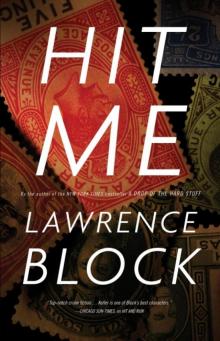 Hit Me
Hit Me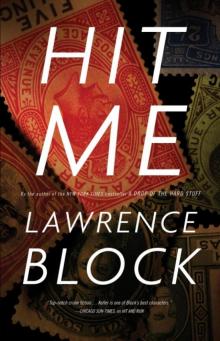 Hit and Run
Hit and Run Hope to Die
Hope to Die Two For Tanner
Two For Tanner Tanners Virgin
Tanners Virgin Dead Girl Blues
Dead Girl Blues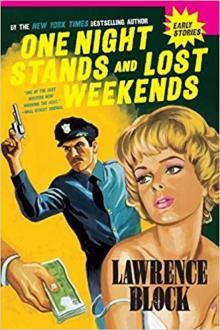 One Night Stands and Lost Weekends
One Night Stands and Lost Weekends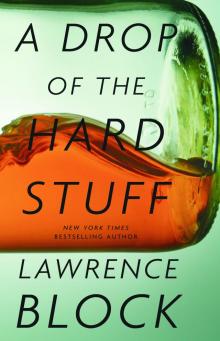 A Drop of the Hard Stuff
A Drop of the Hard Stuff The Canceled Czech
The Canceled Czech Even the Wicked
Even the Wicked Me Tanner, You Jane
Me Tanner, You Jane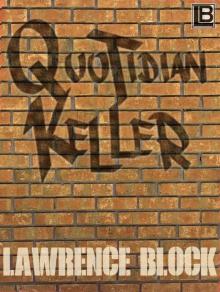 Quotidian Keller
Quotidian Keller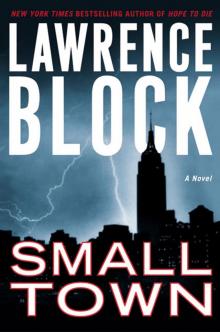 Small Town
Small Town Tanners Tiger
Tanners Tiger A Walk Among the Tombstones
A Walk Among the Tombstones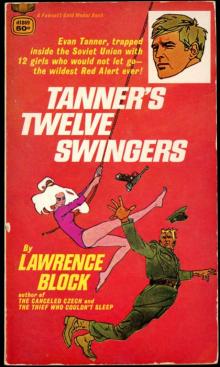 Tanners Twelve Swingers
Tanners Twelve Swingers Gym Rat & the Murder Club
Gym Rat & the Murder Club Everybody Dies
Everybody Dies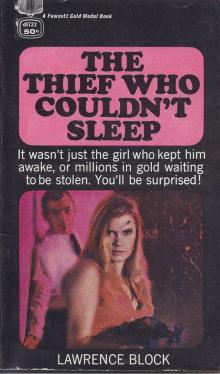 The Thief Who Couldnt Sleep
The Thief Who Couldnt Sleep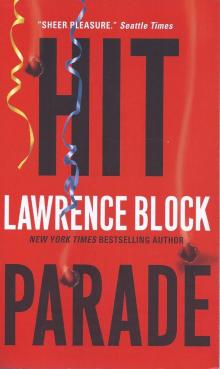 Hit Parade
Hit Parade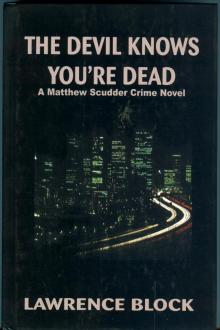 The Devil Knows Youre Dead
The Devil Knows Youre Dead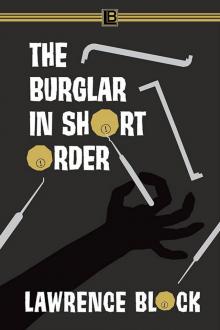 The Burglar in Short Order
The Burglar in Short Order A Long Line of Dead Men
A Long Line of Dead Men Keller's Homecoming
Keller's Homecoming Resume Speed
Resume Speed Keller's Adjustment
Keller's Adjustment Eight Million Ways to Die
Eight Million Ways to Die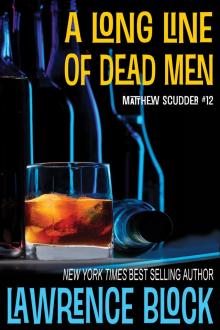 Time to Murder and Create
Time to Murder and Create Out on the Cutting Edge
Out on the Cutting Edge A Dance at the Slaughter House
A Dance at the Slaughter House In the Midst of Death
In the Midst of Death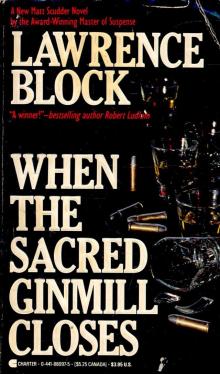 When the Sacred Ginmill Closes
When the Sacred Ginmill Closes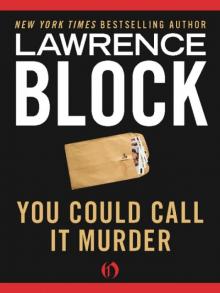 You Could Call It Murder
You Could Call It Murder Keller on the Spot
Keller on the Spot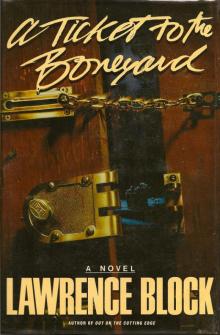 A Ticket to the Boneyard
A Ticket to the Boneyard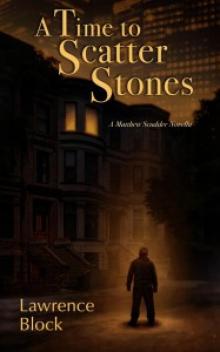 A Time to Scatter Stones
A Time to Scatter Stones Keller's Designated Hitter
Keller's Designated Hitter A Stab in the Dark
A Stab in the Dark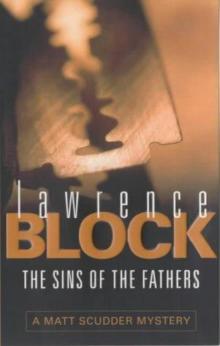 Sins of the Fathers
Sins of the Fathers The Burglar in the Closet
The Burglar in the Closet Burglar Who Dropped In On Elvis
Burglar Who Dropped In On Elvis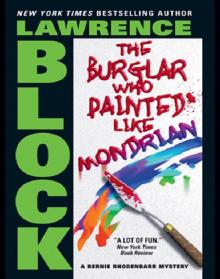 The Burglar Who Painted Like Mondrian
The Burglar Who Painted Like Mondrian The Girl With the Long Green Heart
The Girl With the Long Green Heart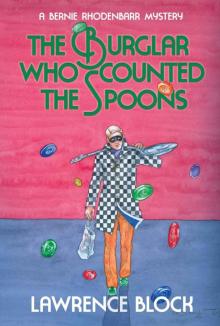 The Burglar Who Counted the Spoons (Bernie Rhodenbarr)
The Burglar Who Counted the Spoons (Bernie Rhodenbarr)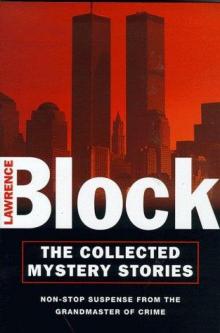 Burglar Who Smelled Smoke
Burglar Who Smelled Smoke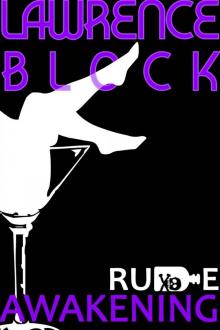 Rude Awakening (Kit Tolliver #2) (The Kit Tolliver Stories)
Rude Awakening (Kit Tolliver #2) (The Kit Tolliver Stories)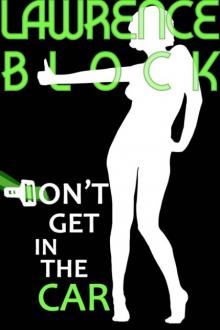 Don't Get in the Car (Kit Tolliver #9) (The Kit Tolliver Stories)
Don't Get in the Car (Kit Tolliver #9) (The Kit Tolliver Stories) CH04 - The Topless Tulip Caper
CH04 - The Topless Tulip Caper You Can Call Me Lucky (Kit Tolliver #3) (The Kit Tolliver Stories)
You Can Call Me Lucky (Kit Tolliver #3) (The Kit Tolliver Stories) CH02 - Chip Harrison Scores Again
CH02 - Chip Harrison Scores Again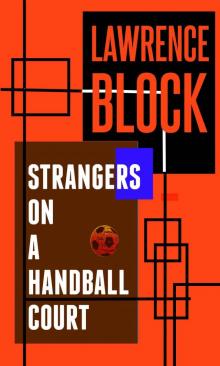 Strangers on a Handball Court
Strangers on a Handball Court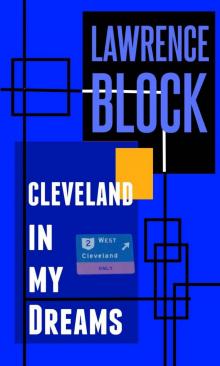 Cleveland in My Dreams
Cleveland in My Dreams Clean Slate (Kit Tolliver #4) (The Kit Tolliver Stories)
Clean Slate (Kit Tolliver #4) (The Kit Tolliver Stories)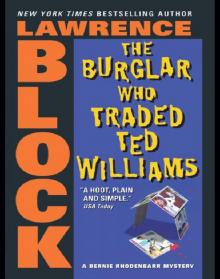 The Burglar Who Traded Ted Williams
The Burglar Who Traded Ted Williams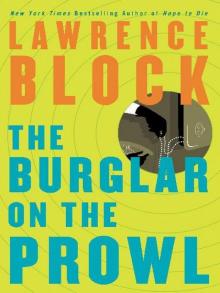 Burglar on the Prowl
Burglar on the Prowl In For a Penny (A Story From the Dark Side)
In For a Penny (A Story From the Dark Side)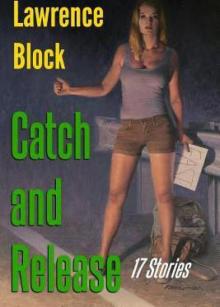 Catch and Release Paperback
Catch and Release Paperback Ride A White Horse
Ride A White Horse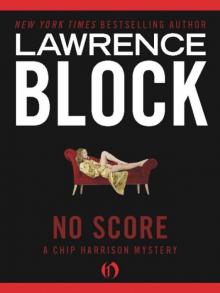 No Score
No Score Looking for David (A Matthew Scudder Story Book 7)
Looking for David (A Matthew Scudder Story Book 7) Jilling (Kit Tolliver #6) (The Kit Tolliver Stories)
Jilling (Kit Tolliver #6) (The Kit Tolliver Stories)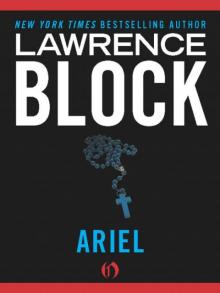 Ariel
Ariel Enough Rope
Enough Rope Grifter's Game
Grifter's Game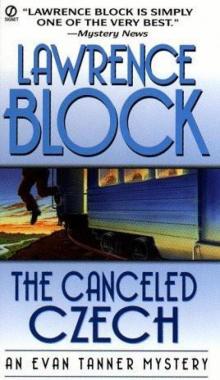 Canceled Czech
Canceled Czech Unfinished Business (Kit Tolliver #12) (The Kit Tolliver Stories)
Unfinished Business (Kit Tolliver #12) (The Kit Tolliver Stories) Thirty
Thirty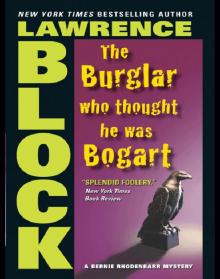 The Burglar Who Thought He Was Bogart
The Burglar Who Thought He Was Bogart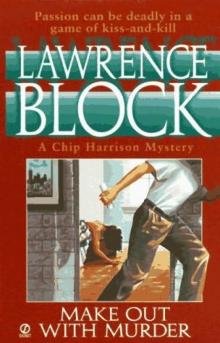 Make Out with Murder
Make Out with Murder One Last Night at Grogan's (A Matthew Scudder Story Book 11)
One Last Night at Grogan's (A Matthew Scudder Story Book 11)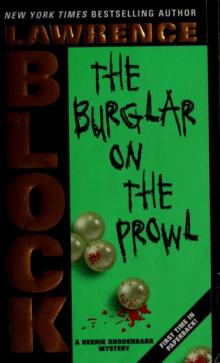 The Burglar on the Prowl
The Burglar on the Prowl Welcome to the Real World (A Story From the Dark Side)
Welcome to the Real World (A Story From the Dark Side) Keller 05 - Hit Me
Keller 05 - Hit Me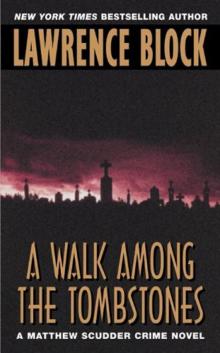 Walk Among the Tombstones: A Matthew Scudder Crime Novel
Walk Among the Tombstones: A Matthew Scudder Crime Novel Ronald Rabbit Is a Dirty Old Man
Ronald Rabbit Is a Dirty Old Man The Burglar Who Studied Spinoza
The Burglar Who Studied Spinoza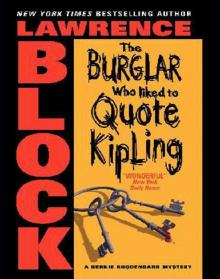 The Burglar Who Liked to Quote Kipling
The Burglar Who Liked to Quote Kipling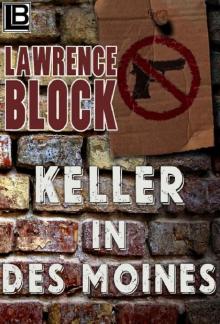 Keller in Des Moines
Keller in Des Moines Hit List
Hit List The Dettweiler Solution
The Dettweiler Solution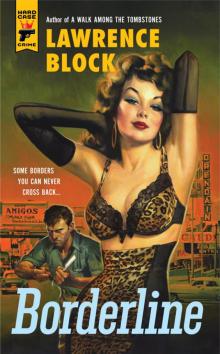 HCC 115 - Borderline
HCC 115 - Borderline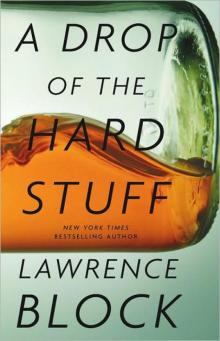 A Drop of the Hard Stuff: A Matthew Scudder Novel
A Drop of the Hard Stuff: A Matthew Scudder Novel Step by Step
Step by Step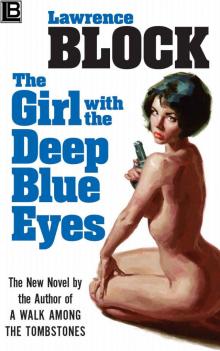 The Girl With the Deep Blue Eyes
The Girl With the Deep Blue Eyes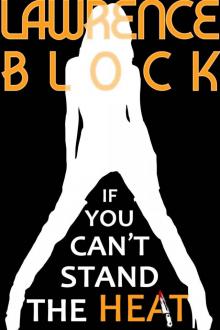 If You Can't Stand the Heat (Kit Tolliver #1) (The Kit Tolliver Stories)
If You Can't Stand the Heat (Kit Tolliver #1) (The Kit Tolliver Stories)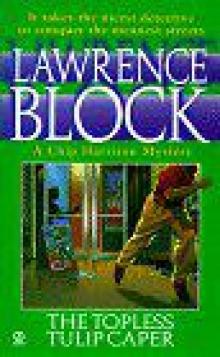 The Topless Tulip Caper
The Topless Tulip Caper Dolly's Trash & Treasures (A Story From the Dark Side)
Dolly's Trash & Treasures (A Story From the Dark Side) The Triumph of Evil
The Triumph of Evil Fun with Brady and Angelica (Kit Tolliver #10 (The Kit Tolliver Stories)
Fun with Brady and Angelica (Kit Tolliver #10 (The Kit Tolliver Stories) Burglars Can't Be Choosers
Burglars Can't Be Choosers Who Knows Where It Goes (A Story From the Dark Side)
Who Knows Where It Goes (A Story From the Dark Side) Deadly Honeymoon
Deadly Honeymoon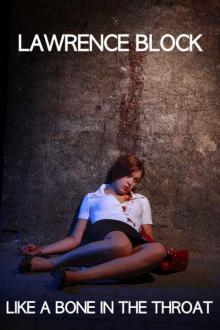 Like a Bone in the Throat (A Story From the Dark Side)
Like a Bone in the Throat (A Story From the Dark Side) A Chance to Get Even (A Story From the Dark Side)
A Chance to Get Even (A Story From the Dark Side) The Boy Who Disappeared Clouds
The Boy Who Disappeared Clouds Collecting Ackermans
Collecting Ackermans Waitress Wanted (Kit Tolliver #5) (The Kit Tolliver Stories)
Waitress Wanted (Kit Tolliver #5) (The Kit Tolliver Stories)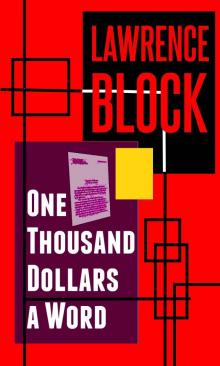 One Thousand Dollars a Word
One Thousand Dollars a Word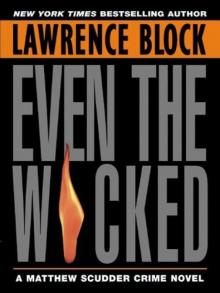 Even the Wicked: A Matthew Scudder Novel (Matthew Scudder Mysteries)
Even the Wicked: A Matthew Scudder Novel (Matthew Scudder Mysteries)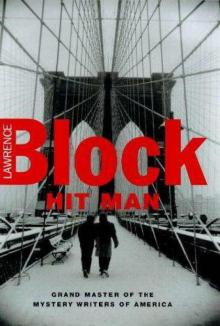 Hit Man
Hit Man The Night and The Music
The Night and The Music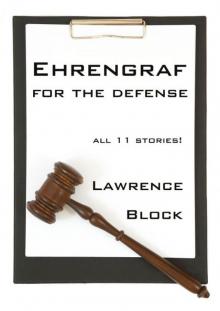 Ehrengraf for the Defense
Ehrengraf for the Defense The Merciful Angel of Death (A Matthew Scudder Story Book 5)
The Merciful Angel of Death (A Matthew Scudder Story Book 5)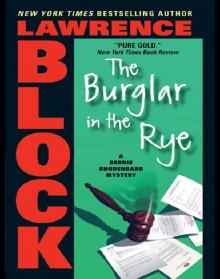 The Burglar in the Rye
The Burglar in the Rye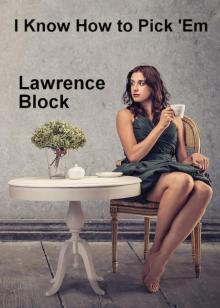 I Know How to Pick 'Em
I Know How to Pick 'Em Getting Off hcc-69
Getting Off hcc-69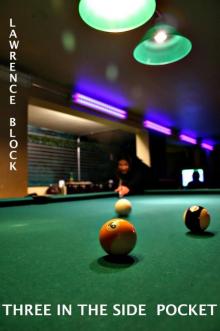 Three in the Side Pocket (A Story From the Dark Side)
Three in the Side Pocket (A Story From the Dark Side)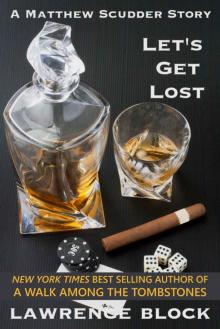 Let's Get Lost (A Matthew Scudder Story Book 8)
Let's Get Lost (A Matthew Scudder Story Book 8) Strange Are the Ways of Love
Strange Are the Ways of Love MOSTLY MURDER: Till Death: a mystery anthology
MOSTLY MURDER: Till Death: a mystery anthology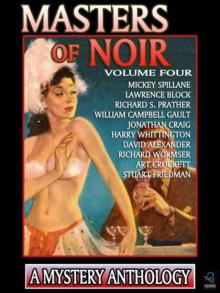 Masters of Noir: Volume Four
Masters of Noir: Volume Four A Week as Andrea Benstock
A Week as Andrea Benstock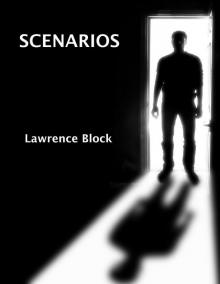 Scenarios (A Stoiry From the Dark Side)
Scenarios (A Stoiry From the Dark Side) The Sex Therapists: What They Can Do and How They Do It (John Warren Wells on Sexual Behavior Book 15)
The Sex Therapists: What They Can Do and How They Do It (John Warren Wells on Sexual Behavior Book 15)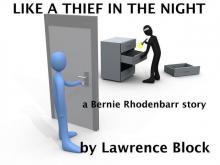 Like a Thief in the Night: a Bernie Rhodenbarr story
Like a Thief in the Night: a Bernie Rhodenbarr story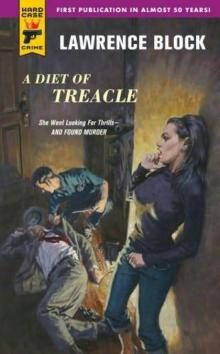 A Diet of Treacle
A Diet of Treacle Community of Women
Community of Women Different Strokes: How I (Gulp!) Wrote, Directed, and Starred in an X-rated Movie (John Warren Wells on Sexual Behavior)
Different Strokes: How I (Gulp!) Wrote, Directed, and Starred in an X-rated Movie (John Warren Wells on Sexual Behavior) You Don't Even Feel It (A Story From the Dark Side)
You Don't Even Feel It (A Story From the Dark Side) Zeroing In (Kit Tolliver #11) (The Kit Tolliver Stories)
Zeroing In (Kit Tolliver #11) (The Kit Tolliver Stories) The Wife-Swap Report (John Warren Wells on Sexual Behavior)
The Wife-Swap Report (John Warren Wells on Sexual Behavior) Keller's Fedora (Kindle Single)
Keller's Fedora (Kindle Single) Speaking of Lust
Speaking of Lust Everybody Dies (Matthew Scudder)
Everybody Dies (Matthew Scudder) Defender of the Innocent: The Casebook of Martin Ehrengraf
Defender of the Innocent: The Casebook of Martin Ehrengraf After the First Death
After the First Death Writing the Novel
Writing the Novel How Far - a one-act stage play
How Far - a one-act stage play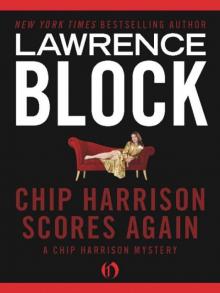 Chip Harrison Scores Again
Chip Harrison Scores Again The Topless Tulip Caper ch-4
The Topless Tulip Caper ch-4 The Crime of Our Lives
The Crime of Our Lives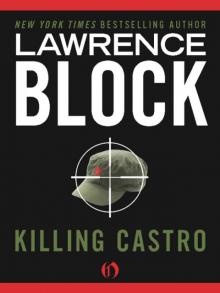 Killing Castro
Killing Castro The Trouble with Eden
The Trouble with Eden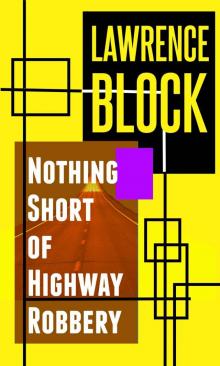 Nothing Short of Highway Robbery
Nothing Short of Highway Robbery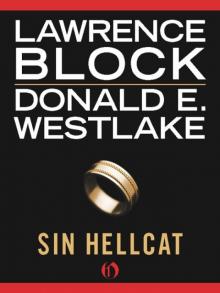 Sin Hellcat
Sin Hellcat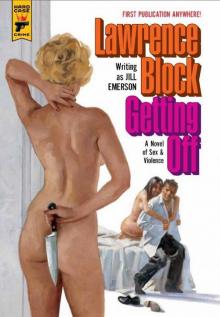 Getting Off: A Novel of Sex & Violence (Hard Case Crime)
Getting Off: A Novel of Sex & Violence (Hard Case Crime) Coward's Kiss
Coward's Kiss Alive in Shape and Color
Alive in Shape and Color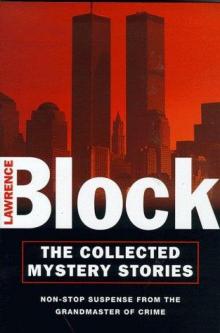 Blow for Freedom
Blow for Freedom The New Sexual Underground: Crossing the Last Boundaries (John Warren Wells on Sexual Behavior Book 10)
The New Sexual Underground: Crossing the Last Boundaries (John Warren Wells on Sexual Behavior Book 10) April North
April North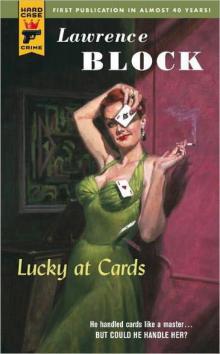 Lucky at Cards
Lucky at Cards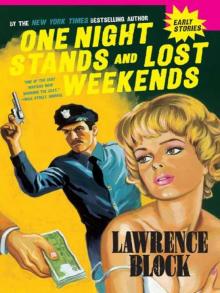 One Night Stands; Lost weekends
One Night Stands; Lost weekends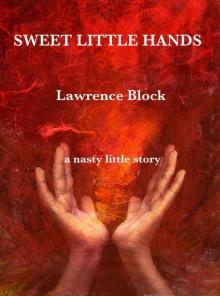 Sweet Little Hands (A Story From the Dark Side)
Sweet Little Hands (A Story From the Dark Side)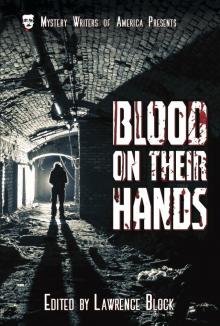 Blood on Their Hands
Blood on Their Hands A Dance at the Slaughterhouse
A Dance at the Slaughterhouse Headaches and Bad Dreams (A Story From the Dark Side)
Headaches and Bad Dreams (A Story From the Dark Side) Keller's Therapy
Keller's Therapy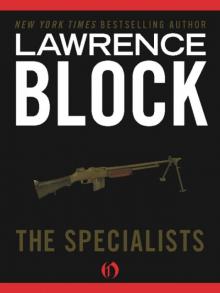 The Specialists
The Specialists Hit and Run jk-4
Hit and Run jk-4 Threesome
Threesome Love at a Tender Age (John Warren Wells on Sexual Behavior)
Love at a Tender Age (John Warren Wells on Sexual Behavior)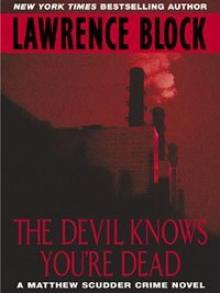 The Devil Knows You're Dead: A MATTHEW SCUDDER CRIME NOVEL
The Devil Knows You're Dead: A MATTHEW SCUDDER CRIME NOVEL Funny You Should Ask
Funny You Should Ask CH01 - No Score
CH01 - No Score Sex and the Stewardess (John Warren Wells on Sexual Behavior)
Sex and the Stewardess (John Warren Wells on Sexual Behavior) A Madwoman's Diary
A Madwoman's Diary When This Man Dies
When This Man Dies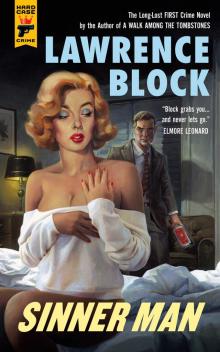 Sinner Man
Sinner Man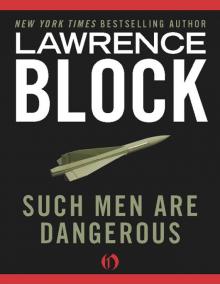 Such Men Are Dangerous
Such Men Are Dangerous A Strange Kind of Love
A Strange Kind of Love Enough of Sorrow
Enough of Sorrow 69 Barrow Street
69 Barrow Street A Moment of Wrong Thinking (Matthew Scudder Mysteries Series Book 9)
A Moment of Wrong Thinking (Matthew Scudder Mysteries Series Book 9)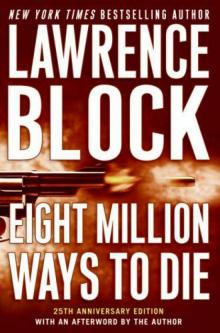 Eight Million Ways to Die ms-5
Eight Million Ways to Die ms-5 Warm and Willing
Warm and Willing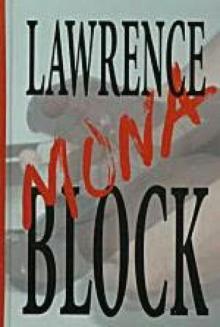 Mona
Mona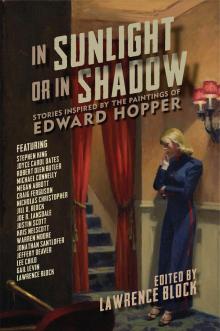 In Sunlight or In Shadow
In Sunlight or In Shadow A Candle for the Bag Lady (Matthew Scudder Book 2)
A Candle for the Bag Lady (Matthew Scudder Book 2)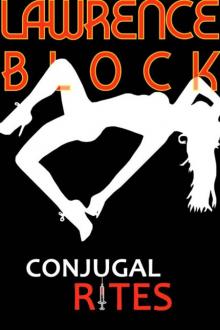 Conjugal Rites (Kit Tolliver #7) (The Kit Tolliver Stories)
Conjugal Rites (Kit Tolliver #7) (The Kit Tolliver Stories) Speaking of Lust - the novella
Speaking of Lust - the novella Gigolo Johnny Wells
Gigolo Johnny Wells Dark City Lights
Dark City Lights Versatile Ladies: the bisexual option (John Warren Wells on Sexual Behavior)
Versatile Ladies: the bisexual option (John Warren Wells on Sexual Behavior) Passport to Peril
Passport to Peril The Taboo Breakers: Shock Troops of the Sexual Revolution (John Warren Wells on Sexual Behavior)
The Taboo Breakers: Shock Troops of the Sexual Revolution (John Warren Wells on Sexual Behavior) Lucky at Cards hcc-28
Lucky at Cards hcc-28 Campus Tramp
Campus Tramp 3 is Not a Crowd (John Warren Wells on Sexual Behavior)
3 is Not a Crowd (John Warren Wells on Sexual Behavior)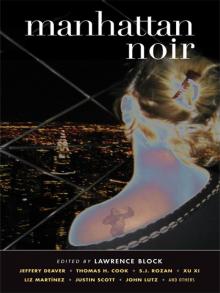 Manhattan Noir
Manhattan Noir The Burglar in the Library
The Burglar in the Library Doing It! - Going Beyond the Sexual Revolution (John Warren Wells on Sexual Behavior Book 13)
Doing It! - Going Beyond the Sexual Revolution (John Warren Wells on Sexual Behavior Book 13)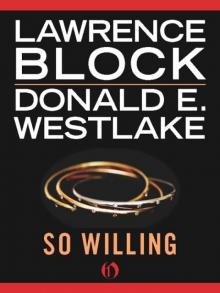 So Willing
So Willing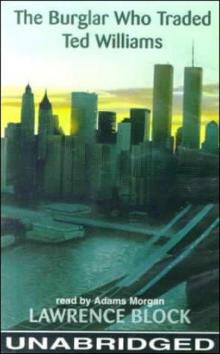 The Burglar Who Traded Ted Williams br-6
The Burglar Who Traded Ted Williams br-6 Candy
Candy Sex Without Strings: A Handbook for Consenting Adults (John Warren Wells on Sexual Behavior)
Sex Without Strings: A Handbook for Consenting Adults (John Warren Wells on Sexual Behavior)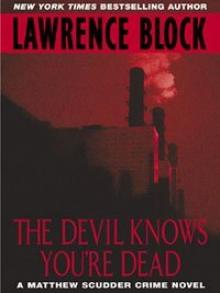 The Devil Knows You're Dead: A MATTHEW SCUDDER CRIME NOVEL (Matthew Scudder Mysteries)
The Devil Knows You're Dead: A MATTHEW SCUDDER CRIME NOVEL (Matthew Scudder Mysteries)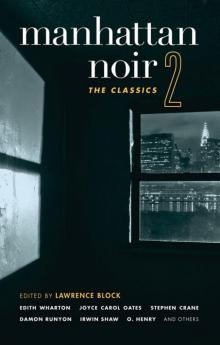 Manhattan Noir 2
Manhattan Noir 2 The Scoreless Thai (aka Two For Tanner)
The Scoreless Thai (aka Two For Tanner)